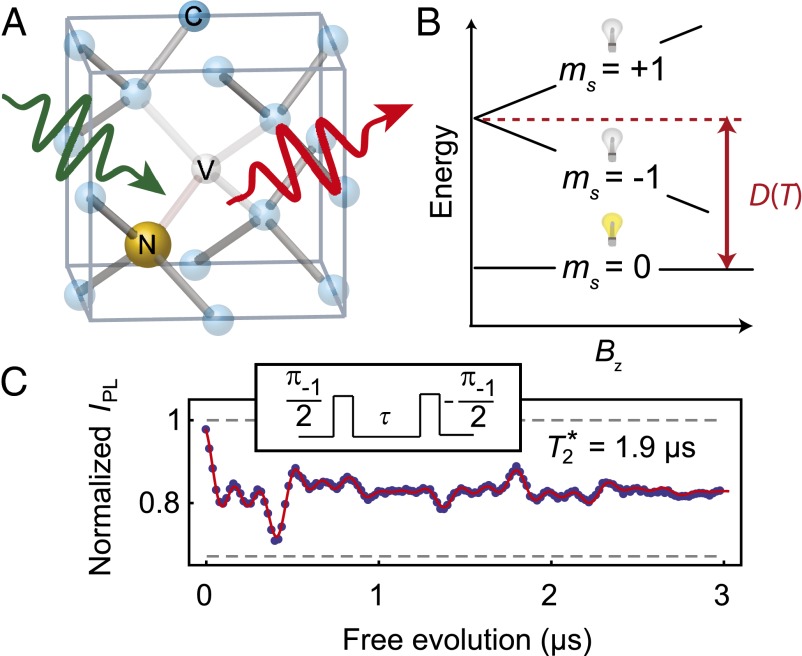Fig. 1.
Nitrogen vacancy center in diamond. (A) Depiction of a nitrogen vacancy (NV) center in the diamond lattice. The wavy green arrow represents the 532-nm laser used for optical excitation and the wavy red arrow represents the phonon-broadened fluorescence used to measure the spin state. (B) Fine structure of the NV center ground state as a function of axial magnetic field. The light bulbs represent the relative fluorescence difference for the mS = 0 and mS = ±1 states. Temperature changes shift the crystal field splitting (D), whereas magnetic fields (Bz) split the mS = ±1 sublevels. This difference enables dynamical decoupling pulse sequences that move the spin between all three states to selectively measure temperature shifts and mitigate magnetic noise. (C) Ramsey measurement performed on the mS = 0 to mS = −1 transition (Bz = 40 G). Inset illustrates the pulse sequence. The short inhomogeneous spin lifetime (T2*) limits the sensitivity of conventional NV center thermometry. The uncertainties in IPL, estimated from the photon shot noise, are ∼0.003. The microwave carrier frequency was detuned from the mI = 0 hyperfine resonance by ∼3.5 MHz to induce oscillations in IPL. The fluorescence signal exhibits a beating caused by the three hyperfine resonances and weak coupling to a nearby 13C spin. Gray dashed lines show the fluorescence intensity of mS = 0 and mS = −1 as determined by independent measurements.

